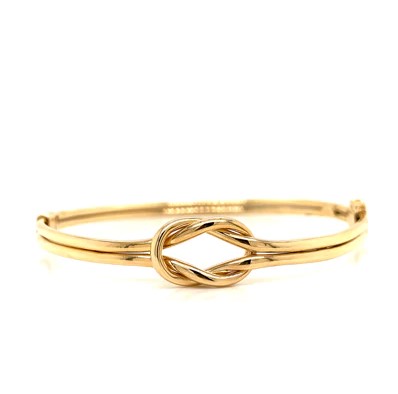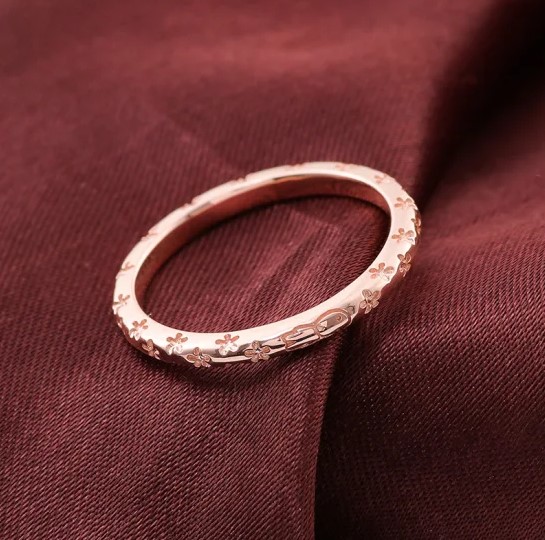Buying gold can be an expensive affair, one that’s filled with a whole lot of decisions and budgeting. Over the centuries, gold has also been personified as a symbol of wealth and luxury, one that’s been adorned for its timeless beauty and enduring value.
Among the various gold alloys available, 10-karat gold occupies a significant place. It is comparatively cheaper and more accessible to people who want the allure of gold without having to pay an extensive price for it.
If you are curious to know more about 10K gold and its purity, we have assorted all the relevant information for you to peek into in this article.
What is 10K Gold?

Before we further elaborate on the characteristics of 10K gold, it makes sense for us to know the basics. It is quintessential for us to understand what constitutes the 10K gold and why it is so popular in the first place.
When talking about gold purity, it starts with 24K gold, which is the non-alloyed, pure gold that’s available in coins, bars, etc. So, when it comes to 10K gold, it alludes to the version that consists of 10 parts out of 24 parts in gold.
If we had to get mathematical with the constituents, 10K gold consists of 41.7% gold, and the rest is made using a mix of other metals. 10K gold is a blend of gold and metal alloys. Also, on the purity scale, 10K is the least pure form of gold jewelry that’s sold in the market.
What are the Characteristics of 10K Gold?
Now that we have a basic idea about 10K gold and what its constituents are, let us elaborate on its characteristics of it so you can better understand its allure.

- Composition and purity
10K gold, as we previously mentioned, consists of 41.7% pure gold and the remaining 58.3% is of other metals. Since the proportion of gold in the 10K purity is comparably less, the price is also significantly lower.
However, to ensure optimal durability, the alloying process with other metals is mandatory. But, not just that, the alloying process also results in a unique blend of color, which explains why 10K gold is available in different color variants, as opposed to 22K or 24K gold.
Some of the common metals that are mixed to make 10K gold include copper, zinc, nickel, etc.
- Durability and wear resistance
Since the ratio of gold is slightly less in the 10K gold, it explains why the durability and resistance are significantly higher in the case of this particular variant. Also, the lower gold percentage makes the gold jewelry made with 10K less prone to scratches.
So, if you are looking to wear gold jewelry daily without causing wear and tear or damage, 10K gold is considered an ideal choice.
- Color variations
Similar to the 14K variant, the 10K gold variant is available in three color variants, depending on the metals that are mixed with the gold.
Here’s a breakdown of the different color variants of 10K gold:
1. 10K White Gold

Irrespective of the color of the 10K gold, one thing that’s constant in all of them is the percentage of gold that’s in the jewelry. For example, if you are buying jewelry that’s made with 10K white gold, you need to understand that it’s made using 41.7% gold, and the rest is made using other metals like silver, zinc, and palladium.
The reason why it takes on the white color is due to the other metals that are mixed with the 41.7% gold in it. White gold, out of the 58.3% metals, consists of 47.4% silver, 10% palladium and 0.9% zinc. This is what gives it its signature white color.
Also, since metal alloys are susceptible to corrosion, a rhodium coating is applied on top of the jewelry to prevent rusting and also make the jewelry more tensile.
| Pros | Cons |
| Ideal for engagement rings, earrings, trinkets, pendants | Needs maintenance once the rhodium coating wears off |
| It is the most affordable of all the gold variants | Can cause skin allergies |
| Durable because of the mix of metals like silver, palladium and zinc | Not ideal for high range engagement rings |
| Light and neutral color works for all skin tones and types | |
| Scratch resistant | |
| Works with precious stones and gems |
2. 10K Yellow Gold

The next and possibly the most common variant is the yellow gold version, which consists of a blend of gold, silver, and copper. This gives the final jewelry piece a distinctive yellow color. Of this, around 52% is silver and 6.3% is copper.
If you are on a budget but want to buy gold jewelry, especially for engagement rings, earrings, or pendants, 10K yellow gold is pretty much the best option that you can opt for.
| Pros | Cons |
| Has a traditional gold color, which makes it effective for engagement rings and other jewelery variants | Due to low purity, the yellow color is quite subtle and not as vibrant as 22K or even 18K. |
| Due the classic gold color, the pieces are quite timeless and versatile | Can trigger skin allergies due to presence of other metals. |
| Doesn’t always contain a rhodium coating, which requires less maintenance over time | Not suitable for high-quality engagement rings. |
| Perfect for individuals with olive and darker skin tone | |
| Highly durable due to low purity |
3. 10K Rose Gold

Like 10K yellow gold, even the 10K rose gold variant consists of gold, silver, and copper. However, the proportions are different. It consists of 41.7% gold, 20% silver, and 38.3% copper, which gives it the characteristic rose gold color.
Among all the three variants, rose gold is pretty much the cheaper one due to its high copper and low silver content. Due to the affordability factor, the rose gold variant is often many people’s first choice.
| Pros | Cons |
| Stylish and trending choice | Has a dull appearance to it |
| Quite affordable | Not suitable for highly priced engagement rings |
| Durable due to high copper content | Not hypoallergenic |
| Aesthetic and versatile | |
| Suits all skin tones |
How Much Does 10K Gold Cost?
The cost of 10K gold is standard depending on the country you live in. So, when you are buying 10K gold, you can be assured that the basic price for the gold will be the same, irrespective of where in the country you are.
However, the price difference comes from the kind of jewelry you are buying, the attachments in the jewelry, and also the kind of making charges associated with it.
For example, 10 grams of 10K gold costs around $271 across the U.S. It is different in other countries. Compared to the other gold purity variants like 14K, 18K and 22K, 10K gold purity is the most affordable option.
What are the Considerations When Buying 10K Gold?
If you are considering purchasing 10K gold jewelry and you are confused about whether or not it is the right decision, you aren’t the only one. So, let us clarify a few factors that you need to prioritize before making the purchase:
1. Hallmark verification
Always check for the hallmark of 10K gold jewelry, confirming its authenticity and purity. The hallmark should include the manufacturer’s mark, the karat value (10K), and sometimes the country of origin.
2. Allergic reactions
Since 10K gold has a major portion composed of different materials like copper, silver, zinc, etc., we’d recommend that you cross-check the allergic tendencies before you purchase. If you are allergic to any of the metals, buying 10K gold might not be worth it.
3. Rhodium plating
10K gold jewelry has 58.3% composed of other metals, which makes the jewelry pieces susceptible to corrosion. What we’d recommend you check is that the jewelry comes with rhodium plating on it to protect it against the same.
When is it Okay to Buy 10K Gold?
Now that you have a comprehensive idea about what 10K gold is and what kind of benefits you can draw from it, the next thing that might be crossing your mind is regarding the purchase.
Given the low-grade purity, many people often question whether or not buying 10K gold would be a good or a bad decision. To be fair, there is no wrong or right answer to this. It all comes down to your budget and personal preferences.
If you have a low budget but still want to purchase gold jewelry, opting for 10K gold jewelry isn’t a bad choice. Also, if you are allergic to most of the metals that are used in making 10K gold jewelry, we’d recommend sitting this one out.
Always research and look into your best options to then decide what would be an ideal choice for yourself.
How to Maintain and Care for 10K Gold Jewelry?
Following your purchase of the 10K gold jewelry, the next thing that you need to prioritize is how you are going to maintain and care for the jewelry in the first place.
To be fair, given the reduced purity and high metal content in the 10K gold, the jewelry pieces are often at risk of rusting and getting damaged.
So, for optimal maintenance, the following are some tips you can follow:
- When it comes to cleaning 10K gold jewelry, opt for a solution of mild soap and water and a microfiber cloth to clean the surface.
- Store 10K gold pieces separately to prevent scratching and tangling. Consider using a jewelry box with individual compartments or soft pouches to protect each item.
Furthermore, if you find the rhodium coating coming off, it’s time for you to take it back to the jeweler to get the coating redone so you can use the jewelry regularly in the future.
Bottom Lines
In conclusion, 10K gold stands as a versatile and accessible option in the world of jewelry. Its unique composition, durability, and affordability make it an attractive choice for a wide range of consumers.
If you have been considering buying some 10K gold jewelry but have been confused about its types, clarity, and purity, we hope this article clarifies all your doubts. Given the low purity, there are a lot of controversies surrounding the 10K gold jewelry but we’d suggest you do what’s ideal for you and your budget.

